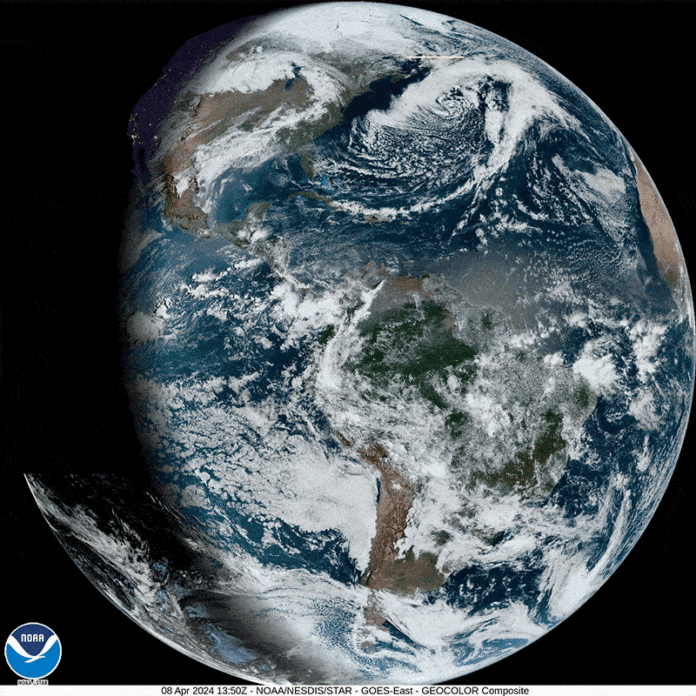Millions of people across North America witnessed the rare celestial spectacle of Monday’s total solar eclipse as it darkened a path from Texas to Maine. Even those who didn’t witness total darkness saw skies dim, putting much of the country in a dusk-like appearance over several hours.
Tuesday’s total solar eclipse, the first since 2017, followed a path from Mazatlán, Mexico, to Newfoundland, crossing 15 U.S. states and affecting an area home to more than 40 million people.
Witnesses in the path of totality saw their surroundings plunge into into daytime darkness, while those outside this path witnessed a partial eclipse.
The eclipse made its first ‘landfall’ in Mazatlán, Mexico, plunging its shorelines into darkness, before moving through the U.S., and eventually shifting out into the Atlantic near Newfoundland.
Total solar eclipses are relatively rare events that do not often align with densely populated regions, making the 2024 eclipse a particularly special occurrence.
The next coast-to-coast total solar eclipse in the U.S. will not happen until 2045.
Thousands of people, including noted celebrities, shared their observations on social media. Clad in eclipse safety glasses, Today show host and meteorologist Al Roker said, “I can see sunshine, oh, baby!” he said in the video, as clouds parted in New York ahead of the eclipse. “Just hang in there—a couple more hours, that’s all we’re asking.”
President Biden shared that “an eclipse is worth marveling at” in an Instagram post. “But don’t be silly, folks—play it safe and wear protective eyewear,” he said.
Other spectators shared their experiences, describing feelings of awe and amazement. In Erie, Pennsylvania, viewers applauded as darkness enveloped them. A family who drove eight hours from Virginia to witness the event told CBS News, “It was totally worth it. It was amazing.”
This eclipse not only provided stunning visual marvels but also offered educational opportunities. High school students in Indiana, for example, collected data on the sun’s corona for NASA, contributing to scientific understanding of solar phenomena.
NOAA’s GOES satellite captured this time lapse image of Earth as the moon’s shadow passed over North America.
Uncommon Knowledge
Newsweek is committed to challenging conventional wisdom and finding connections in the search for common ground.
Newsweek is committed to challenging conventional wisdom and finding connections in the search for common ground.


